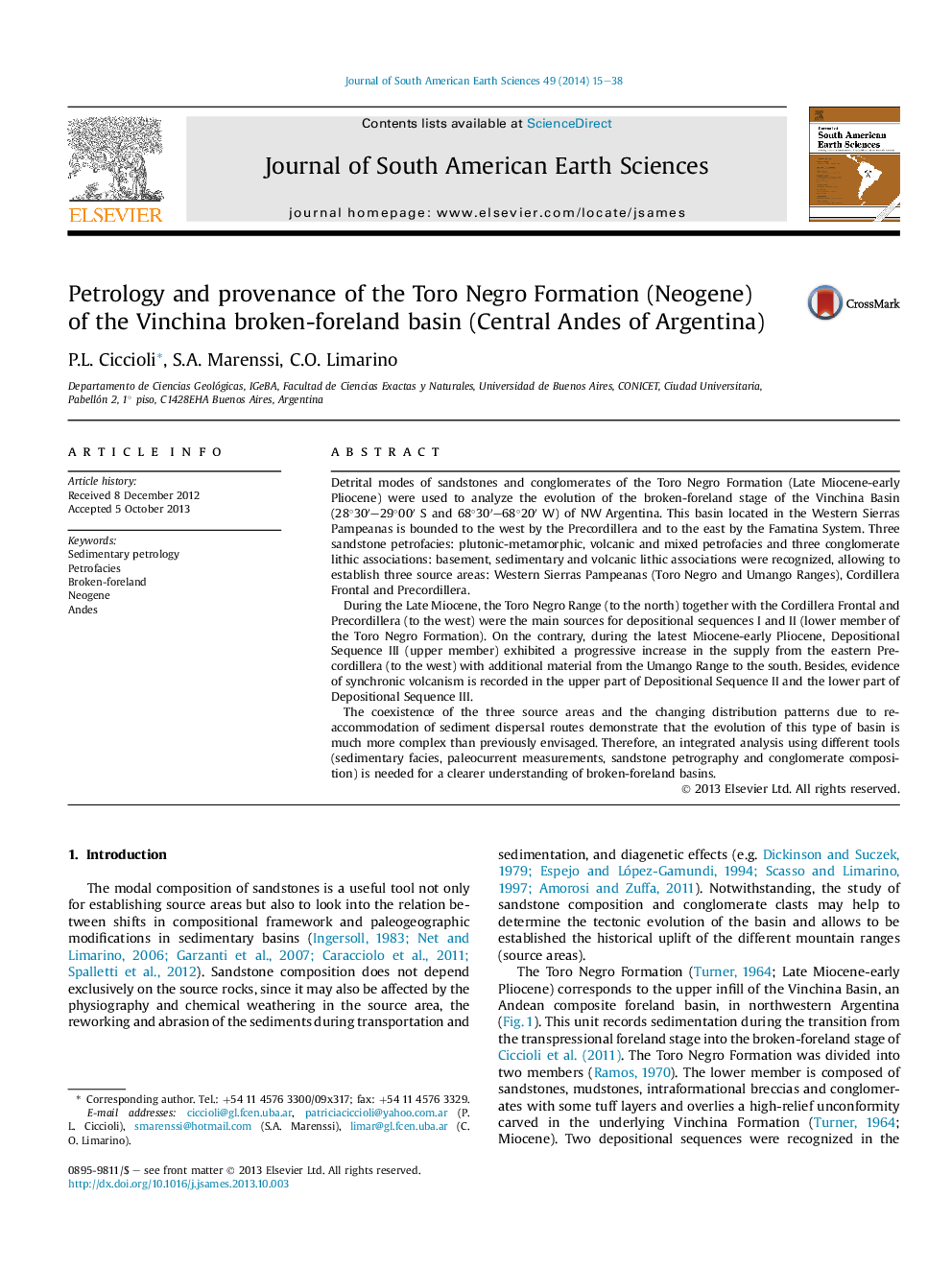| کد مقاله | کد نشریه | سال انتشار | مقاله انگلیسی | نسخه تمام متن |
|---|---|---|---|---|
| 4682357 | 1635160 | 2014 | 24 صفحه PDF | دانلود رایگان |
• We study the sedimentary petrology of the Neogene Toro Negro Formation.
• We analyze the evolution of the petrofacies and conglomerate lithic associations.
• We recognize three main source areas.
• We relate compositional changes to the relative importance of each source areas.
• We propose a model to explain the compositional complexities in a broken-foreland basin.
Detrital modes of sandstones and conglomerates of the Toro Negro Formation (Late Miocene-early Pliocene) were used to analyze the evolution of the broken-foreland stage of the Vinchina Basin (28°30′–29°00′ S and 68°30′–68°20′ W) of NW Argentina. This basin located in the Western Sierras Pampeanas is bounded to the west by the Precordillera and to the east by the Famatina System. Three sandstone petrofacies: plutonic-metamorphic, volcanic and mixed petrofacies and three conglomerate lithic associations: basement, sedimentary and volcanic lithic associations were recognized, allowing to establish three source areas: Western Sierras Pampeanas (Toro Negro and Umango Ranges), Cordillera Frontal and Precordillera.During the Late Miocene, the Toro Negro Range (to the north) together with the Cordillera Frontal and Precordillera (to the west) were the main sources for depositional sequences I and II (lower member of the Toro Negro Formation). On the contrary, during the latest Miocene-early Pliocene, Depositional Sequence III (upper member) exhibited a progressive increase in the supply from the eastern Precordillera (to the west) with additional material from the Umango Range to the south. Besides, evidence of synchronic volcanism is recorded in the upper part of Depositional Sequence II and the lower part of Depositional Sequence III.The coexistence of the three source areas and the changing distribution patterns due to re-accommodation of sediment dispersal routes demonstrate that the evolution of this type of basin is much more complex than previously envisaged. Therefore, an integrated analysis using different tools (sedimentary facies, paleocurrent measurements, sandstone petrography and conglomerate composition) is needed for a clearer understanding of broken-foreland basins.
Journal: Journal of South American Earth Sciences - Volume 49, January 2014, Pages 15–38
